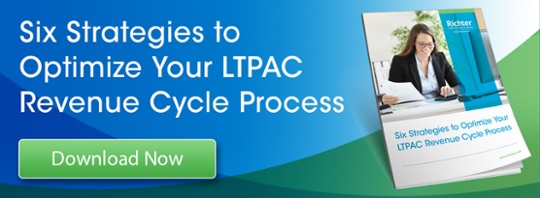- Solutions
- Accounting
- Additional Documentation Requests (ADRs) Management & Support
- Clinical Consulting
- EHR Implementation & Optimization
- Medicaid Eligibility
- Outsourced Contract Controller Services
- Outsourced Revenue Cycle Management
- PointClickCare® Consulting
- QAPI Consulting
- Resident Trust Fund Management & Advisory Services
- Revenue Cycle and Reimbursement Consulting
- Who We Serve
- Resources
- Careers
- About Us
- Contact

 All long-term post-acute care (LTPAC) organizations must generate revenue in order to serve patients and residents and pursue sustainable growth. However, generating revenue by itself simply is not enough; your LTPAC must also collect the revenue while minimizing leakage and potential lost dollars. In this regard, revenue cycle management is key.
All long-term post-acute care (LTPAC) organizations must generate revenue in order to serve patients and residents and pursue sustainable growth. However, generating revenue by itself simply is not enough; your LTPAC must also collect the revenue while minimizing leakage and potential lost dollars. In this regard, revenue cycle management is key.

